Synthesis and Characterization of a Zirconium (Zr) Thin Film on Si(100) via Pulsed Laser Deposition
Abstract
:1. Introduction
2. Experimental Setup
3. Results and Discussions
3.1. Effect of Fluence and Wavelength
3.1.1. XRD Analysis
3.1.2. Effect of Temperature (XRD)
3.1.3. Morphology (Effect of Fluence)
3.1.4. Morphology (Effect of Temperature)
4. Summary
Author Contributions
Funding
Institutional Review Board Statement
Informed Consent Statement
Data Availability Statement
Conflicts of Interest
References
- Nielsen, H.R.; Schlewitz, H.J.; Nielsen, H. Zirconium and Zirconium Compounds. In Kirk-Othmer Encyclopedia of Chemical Technology; Wiley & Sons: Hoboken, NJ, USA; pp. 1–46. Available online: https://www.samaterials.com/content/the-application-of-zirconium-products.html (accessed on 15 August 2023).
- Romanov, R.I.; Zuev, V.V.; Fominskii, V.Y.; Demin, M.V.; Grigoriev, V.V. Electrical properties of thin-film structures formed by pulsed laser deposition of Au, Ag, Cu, Pd, Pt, W, Zr metals on n-6 H-SiC crystal. Semiconductors 2010, 44, 1192–1198. [Google Scholar] [CrossRef]
- Fankhauser, J.; Sato, M.; Yu, D.; Ebnonnasir, A.; Kobashi, M.; Goorsky, M.S.; Kodambaka, S. Growth and characterization of epitaxial Zr(0001) thin films on Al2O3(0001). J. Vac. Sci. Technol. A 2016, 34, 050606. [Google Scholar] [CrossRef]
- Ogugua, S.N.; Ntwaeaborwa, O.M.; Swart, H.C. Latest Development on Pulsed Laser Deposited Thin Films for Advanced Luminescence Applications. Coatings 2020, 10, 1078. [Google Scholar] [CrossRef]
- Duta, L.; Mihailescu, I.N. Advances and Challenges in Pulsed Laser Deposition for Complex Material Applications. Coatings 2023, 13, 393. [Google Scholar] [CrossRef]
- Irimiciuc, S.A.; Chertopalov, S.; Lancok, J.; Craciun, V. Langmuir Probe Technique for Plasma Characterization during Pulsed Laser Deposition Process. Coatings 2021, 11, 762. [Google Scholar] [CrossRef]
- Duta, L.; Popescu, A.C. Current Research in Pulsed Laser Deposition. Coatings 2021, 11, 274. [Google Scholar] [CrossRef]
- Abdisatarov, B.; Ilhom, S.; Kholikov, K.; Loomis, D.; Dobrokhotov, V.; Khenner, M.; Er, A.O. Morphology and structure of Pb thin films grown on Si(111) by pulsed laser deposition. Appl. Phys. A 2020, 126, 1–7. [Google Scholar] [CrossRef]
- Axente, E.; Socol, G. Special Issue “Pulsed Laser Deposition of Thin Films: Recent Advances and Challenge”. Coatings 2022, 12, 368. [Google Scholar] [CrossRef]
- Jessadaluk, S.; Khemasiri, N.; Kayunkid, N.; Rangkasikorn, A.; Wirunchit, S.; Tammarugwattana, N.; Mano, K.; Chananonnawathorn, C.; Horprathum, M.; Klamchuen, A.; et al. Influence of Antimony Species on Electrical Properties of Sb-Doped Zinc Oxide Thin Films Prepared by Pulsed Laser Deposition. Nanomaterials 2023, 13, 1799. [Google Scholar] [CrossRef]
- Li, B.; Yang, H.-L.; Holmes, R.; Cui, L.-J.; Kano, S.; Abe, H. Thermal stability of the Cr-coated zirconium alloy microstructure prepared by pulsed laser deposition. Tungsten 2023, 8, 1–9. [Google Scholar] [CrossRef]
- Liu, W.; Wen, C.; Liu, Q.; Mao, L.; Zhou, X.; Long, X.; Peng, S. The effects of deuteration on the nanostructured zirconium films deposited by pulsed laser deposition for nuclear fusion applications. J. Nucl. Mater. 2015, 461, 325–328. [Google Scholar] [CrossRef]
- Benouareth, K.; Tristant, P.; Jaoul, C.; Le Niniven, C.; Nouveau, C.; Dublanche-Tixier, C.; Bouabellou, A. Study of the interaction between a zirconium thin film and an EN C100 steel substrate: Temperature effect. Vacuum 2016, 125, 234–239. [Google Scholar] [CrossRef]
- Farha, A.H.; Er, A.O.; Ufuktepe, Y.; Myneni, G.; Elsayed-Ali, H.E. Effects of substrate temperature on properties of NbNx films grown on Nb by pulsed laser deposition. Appl. Surf. Sci. 2011, 258, 1613–1618. [Google Scholar] [CrossRef]
- Rodríguez-Hernández, E.P.; Quiñones-Galván, J.; Meléndez-Lira, M.; Santos-Cruz, J.; Contreras-Puente, G.; de Moure-Flores, F. Effect of laser fluence on structural and optical properties of CuxS films grown by pulsed laser deposition at different wavelengths. Mater. Res. Express 2019, 7, 015908. [Google Scholar] [CrossRef]
- Ojeda-G-P, A.; Döbeli, M.; Lippert, T. Influence of Plume Properties on Thin Film Composition in Pulsed Laser Deposition. Adv. Mater. Interfaces 2018, 5, 1701062. [Google Scholar] [CrossRef]
- Khuzhakulov, Z.; Kylychbekov, S.; Allamyradov, Y.; Majidov, I.; Ben Yosef, J.; Er, A.Y.; Kitchens, C.; Banga, S.; Badarudeen, S.; Er, A.O. Formation of picosecond laser-induced periodic surface structures on steel for knee arthroplasty prosthetics. Front. Met. Alloy. 2023, 1, 1090104. [Google Scholar] [CrossRef]
- Huang, J.; Xu, K.; Xu, S.; Li, X.; Wei, Q.H. Self-Aligned Laser-Induced Periodic Surface Structures for Large-Area Controllable Nanopatterning. Laser Photonics Rev. 2022, 16, 2200093. [Google Scholar] [CrossRef]
- Zhang, D.; Liu, R.; Li, Z. Irregular LIPSS produced on metals by single linearly polarized femtosecond laser. Int. J. Extreme Manuf. 2022, 4, 015102. [Google Scholar] [CrossRef]
- Rivera, L.; Munoz-Martin, D.; Chávez-Chávez, A.; Morales, M.; Gómez-Rosas, G.; Molpeceres, C. Subwavelength LIPSS formation on SS304 by picosecond laser irradiation under water confinement. Mater. Sci. Eng. B 2021, 273, 115393. [Google Scholar] [CrossRef]
- Wicklein, S.; Sambri, A.; Amoruso, S.; Wang, X.; Bruzzese, R.; Koehl, A.; Dittmann, R. Pulsed laser ablation of complex oxides: The role of congruent ablation and preferential scattering for the film stoichiometry. Appl. Phys. Lett. 2012, 101, 13. [Google Scholar] [CrossRef]
- Ohnishi, T.; Hang, B.; Xu, X.; Osada, M.; Takada, K. Quality control of epitaxial LiCoO2 thin films grown by pulsed laser deposition. J. Mater. Res. 2010, 25, 1886–1889. [Google Scholar] [CrossRef]
- Kan, D.; Shimakawa, Y. Controlled cation stoichiometry in pulsed laser deposition-grown BaTiO3 epitaxial thin films with laser fluence. Appl. Phys. Lett. 2011, 99, 081907. [Google Scholar] [CrossRef]
- Schou, J. Physical aspects of the pulsed laser deposition technique: The stoichiometric transfer of material from target to film. Appl. Surf. Sci. 2009, 255, 5191–5198. [Google Scholar] [CrossRef]
- Sigmund, P. Sputtering by ion bombardment theoretical concepts. In Sputtering by Particle Bombardment I: Physical Sputtering of Single-Element Solids; Behrisch, R., Ed.; Springer: Berlin/Heidelberg, Germany, 1981; pp. 9–71. [Google Scholar]
- Bäuerle, D. Laser Processing and Chemistry; Springer Science & Business Media: Berlin/Heidelberg, Germany, 2013. [Google Scholar]
- Chen, L.C.; Chrisey, D.B.; Hubler, G.K. Hubler, Pulsed Laser Deposition of Thin Films; Wiley: New York, NY, USA, 1994. [Google Scholar]
- Kautek, W.; Roas, B.; Schultz, L. Formation of Y-Ba-Cu-oxide thin films by pulsed laser deposition: A comparative study in the UV, visible and IR range. Thin Solid Films 1990, 191, 317–334. [Google Scholar] [CrossRef]
- Liu, H.; Mao, X.; Yoo, J.; Russo, R. Early phase laser induced plasma diagnostics and mass removal during single-pulse laser ablation of silicon. Spectrochim. Acta Part B At. Spectrosc. 1999, 54, 1607–1624. [Google Scholar] [CrossRef]
- Liu, W.; Liang, J.; Zhou, X.; Long, X. Formation of zirconium silicide between silicon substrate and zirconium films. Mater. Lett. 2014, 122, 220–222. [Google Scholar] [CrossRef]
- Skinner, G.B.; Johnston, H.L. Thermal Expansion of Zirconium between 298 and 1600 K. J. Chem. Phys. 1953, 21, 1383–1384. [Google Scholar] [CrossRef]
- Gong, Y.; Wang, C.; Shen, Q.; Zhang, L. Low-temperature deposition of iridium thin films by pulsed laser deposition. Vacuum 2008, 82, 594–598. [Google Scholar] [CrossRef]
- Wu, K.-S.; Chern, M.-Y. Temperature-dependent growth of pulsed-laser-deposited bismuth thin films on glass substrates. Thin Solid Films 2008, 516, 3808–3812. [Google Scholar] [CrossRef]
- Takai, Y.; Sato, M. Epitaxial growth of platinum thin films on (100) MgO by pulsed laser deposition. Supercond. Sci. Technol. 1999, 12, 486–490. [Google Scholar] [CrossRef]
- Ismail, R.A.; Mousa, A.M.; Shaker, S.S. Preparation of visible-enhanced PbI2/MgO/ Si heterojunction photodetector. Optik 2019, 202, 163585. [Google Scholar] [CrossRef]
- Yoshitake, T.; Nishiyama, T.; Aoki, H.; Suizu, K.; Takahashi, K.; Nagayama, K. The effects of substrate temperature and laser wavelength on the formation of carbon thin films by pulsed laser deposition. Diam. Relat. Mater. 1999, 8, 463–467. [Google Scholar] [CrossRef]
- Modabberasl, A.; Sharifi, M.; Shahbazi, F.; Kameli, P. Multifractal analysis of DLC thin films deposited by pulsed laser deposition. Appl. Surf. Sci. 2019, 479, 639–645. [Google Scholar] [CrossRef]
- Zeng, J.N.; Low, J.K.; Ren, Z.M.; Liew, T.; Lu, Y.F. Effect of deposition conditions on optical and electrical properties of ZnO films prepared by pulsed laser deposition. Appl. Surf. Sci. 2002, 197–198, 362–367. [Google Scholar] [CrossRef]
- Liu, M.; Wei, X.; Zhang, Z.; Sun, G.; Chen, C.; Xue, C.; Zhuang, H.; Man, B. Effect of temperature on pulsed laser deposition of ZnO films. Appl. Surf. Sci. 2005, 252, 4321–4326. [Google Scholar] [CrossRef]
- He, J.; Zhuang, H.; Xue, C.; Wang, S.; Hu, L.; Xue, S. Effect of substrate temperature on microstructural and optical properties of ZnO films grown by pulsed laser deposition. Rare Met. 2006, 25, 161–165. [Google Scholar] [CrossRef]
- Kang, S.J.; Joung, Y.H.; Shin, H.H.; Yoon, Y.S. Effect of substrate temperature on structural, optical and electrical properties of ZnO thin films deposited by pulsed laser deposition. J. Mater. Sci. Mater. Electron. 2007, 19, 1073–1078. [Google Scholar] [CrossRef]
- Son, C.S.; Kim, S.M.; Kim, Y.H.; Kim, S.I.; Kim, Y.T.; Yoon, K.H.; Choi, I.-H.; Lopez, H.C. Deposition-temperature dependence of ZnO/Si grown by pulsed laser deposition. J. Korean Phys. Soc. 2004, 45, 685–688. [Google Scholar]
- Ryu, Y.R.; Zhu, S.; Budai, J.D.; Chandrasekhar, H.R.; Miceli, P.F.; White, H.W. Optical and structural properties of ZnO films deposited on GaAs by pulsed laser deposition. J. Appl. Phys. 2000, 88, 201–204. [Google Scholar] [CrossRef]
- Ortiz, M.; Repetto, E.; Si, H. A continuum model of kinetic roughening and coarsening in thin films. J. Mech. Phys. Solids 1999, 47, 697–730. [Google Scholar] [CrossRef]
- Korzec, M.D.; Evans, P.L. From bell shapes to pyramids: A reduced continuum model for self-assembled quantum dot growth. Phys. D Nonlinear Phenom. 2010, 239, 465–474. [Google Scholar] [CrossRef]
- Liu, F.; Lagally, M. Epitaxial growth of Si on Si(001). In The Chemical Physics of Solid Surfaces; Elsevier: Amsterdam, The Netherlands, 1997; pp. 258–296. [Google Scholar]
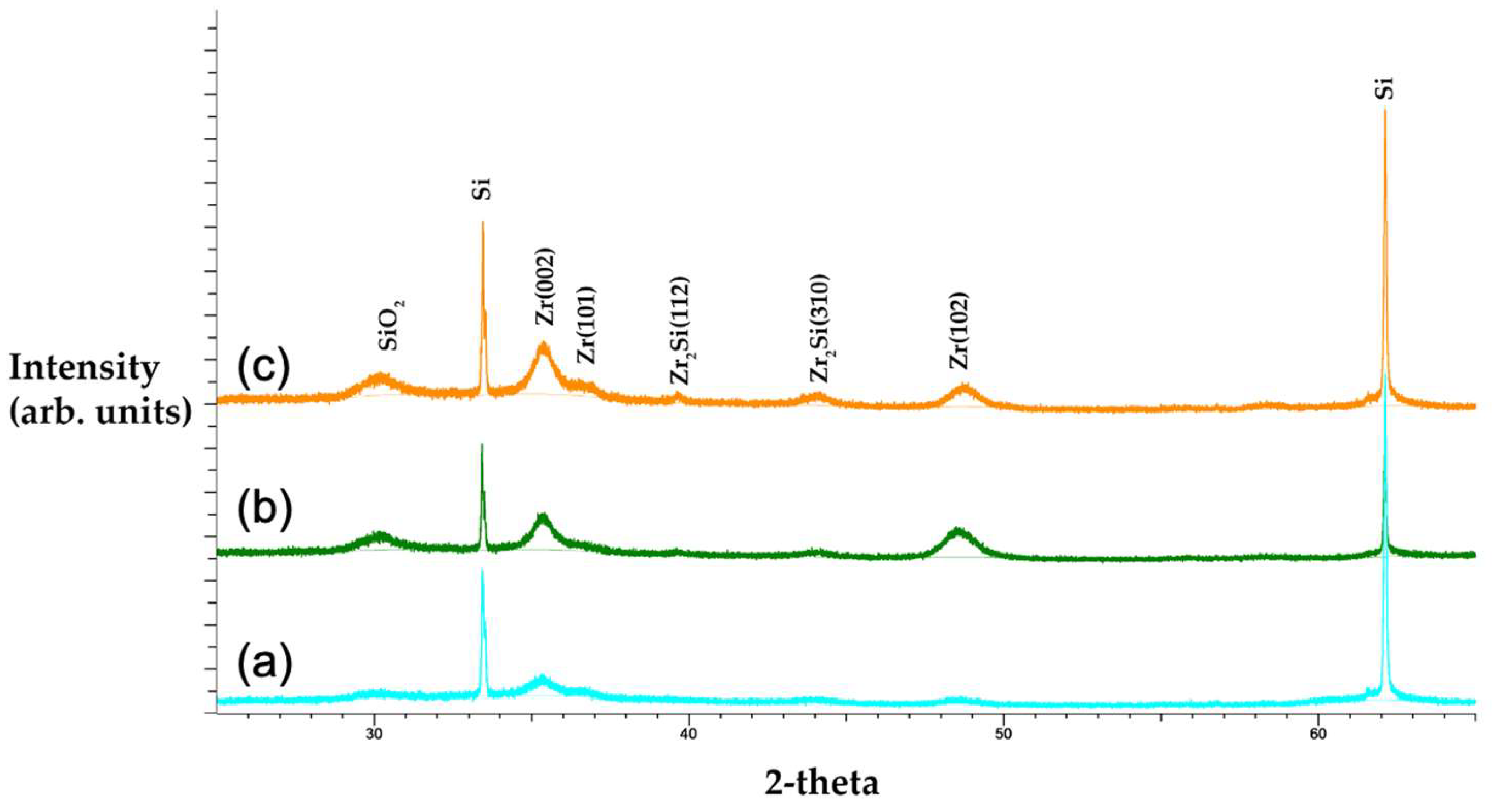
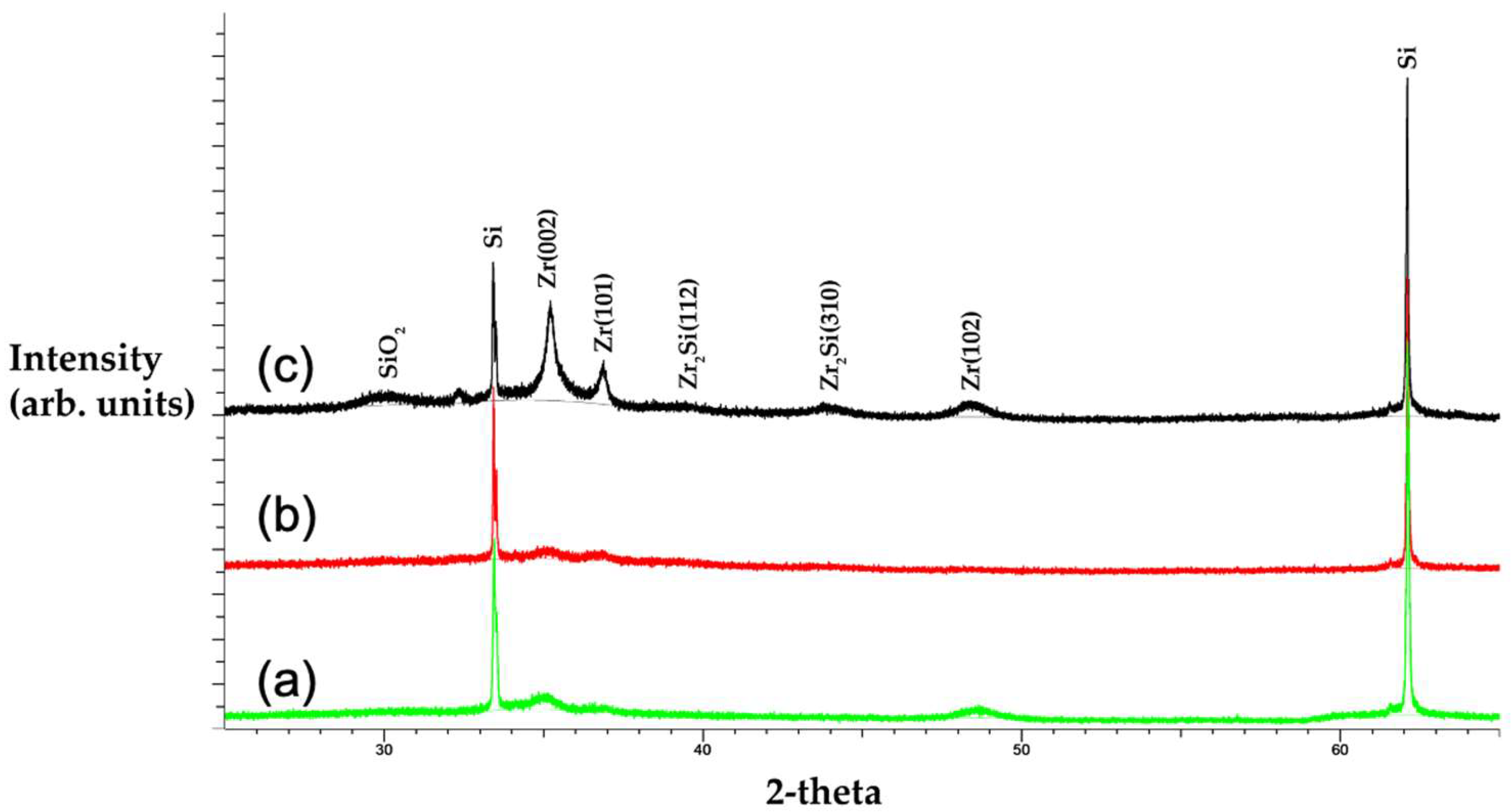
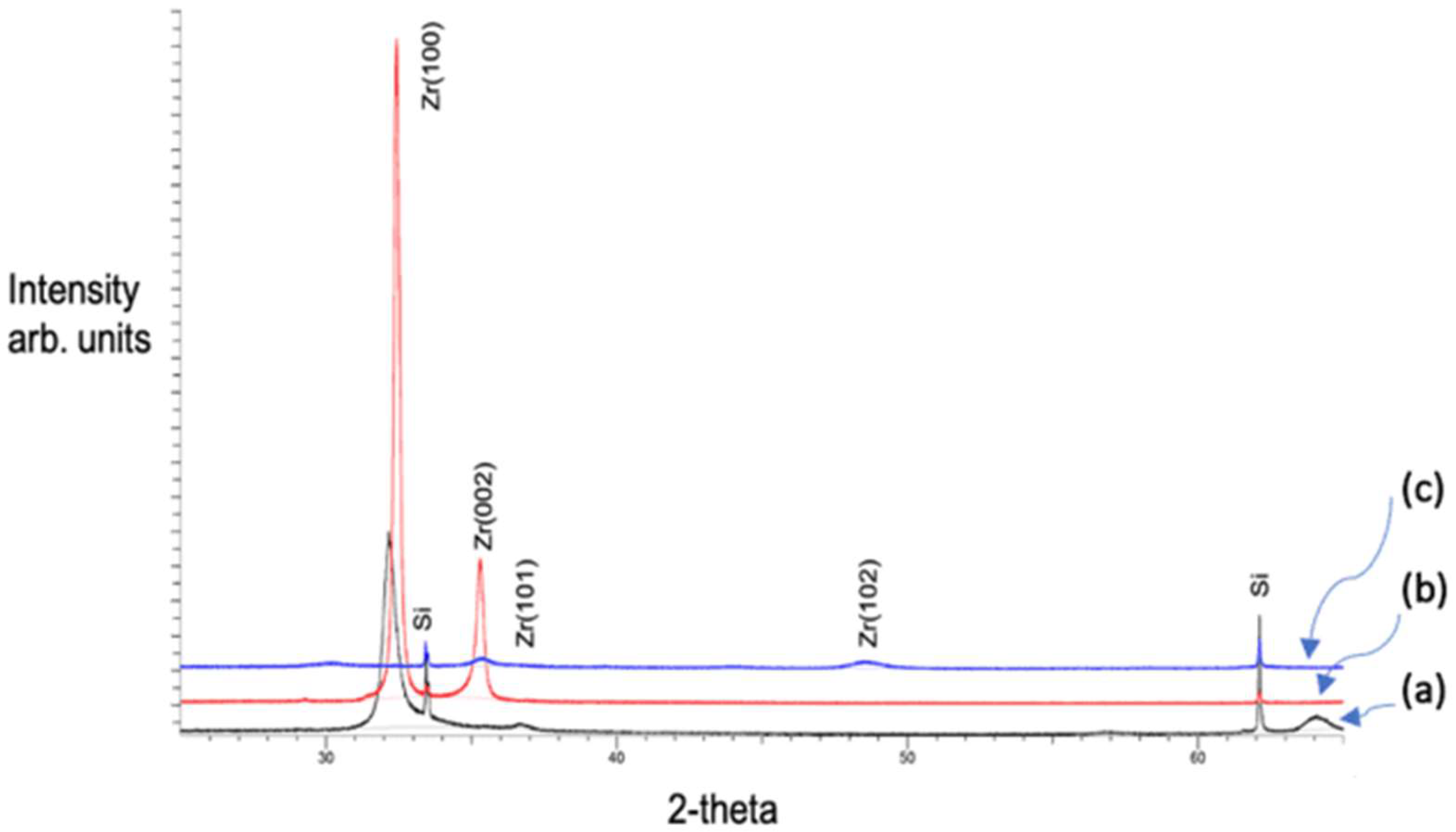
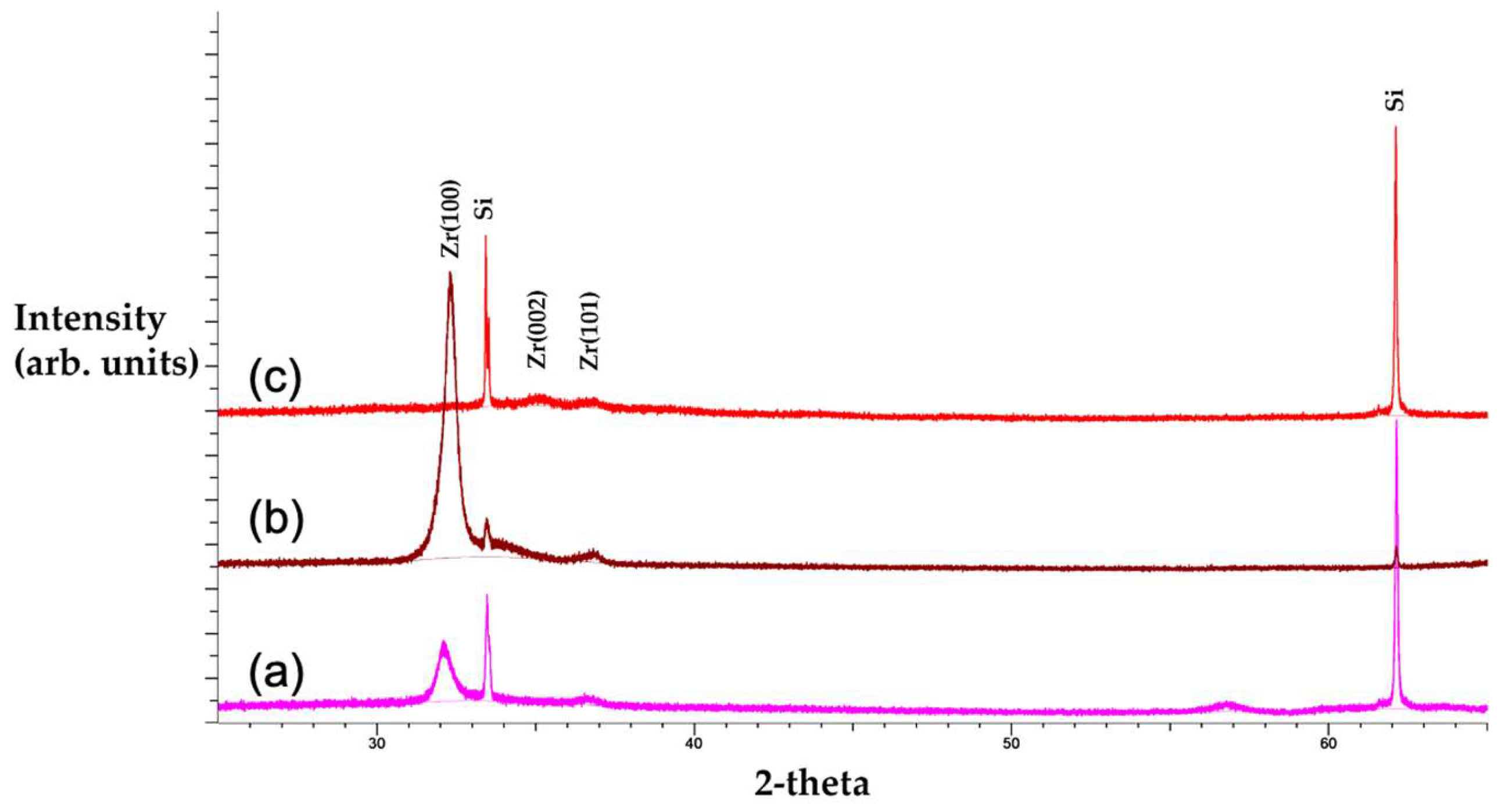
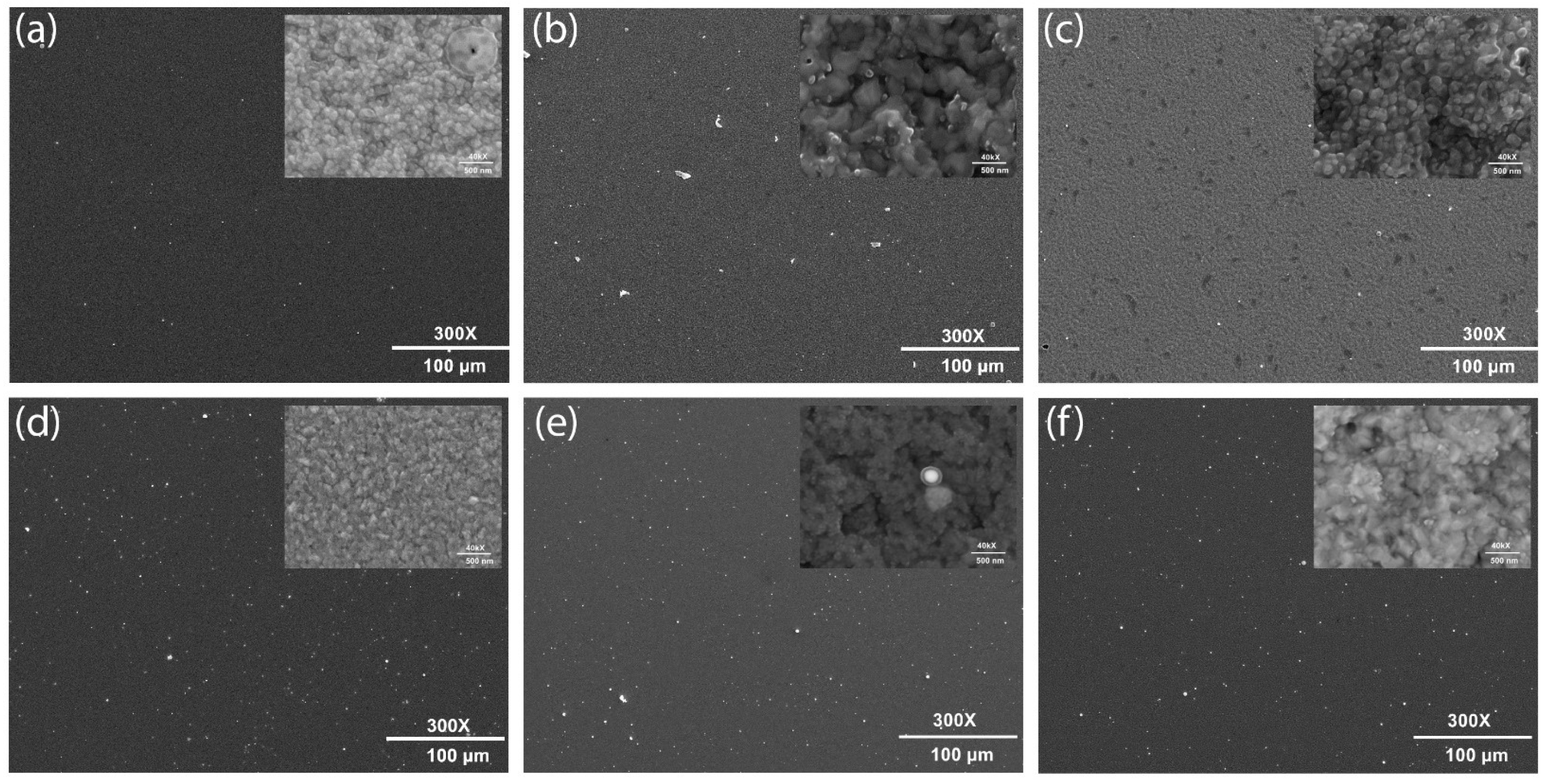

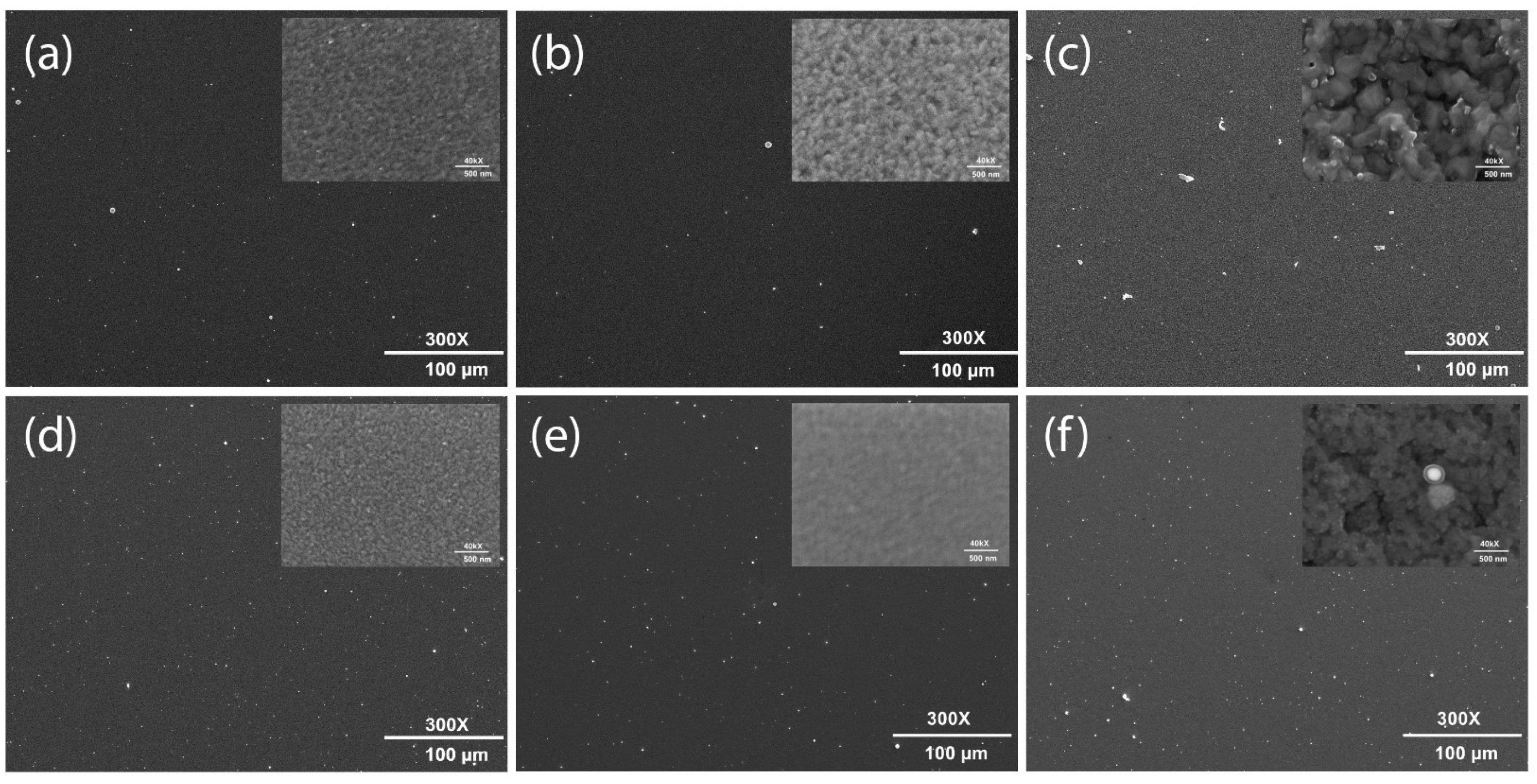
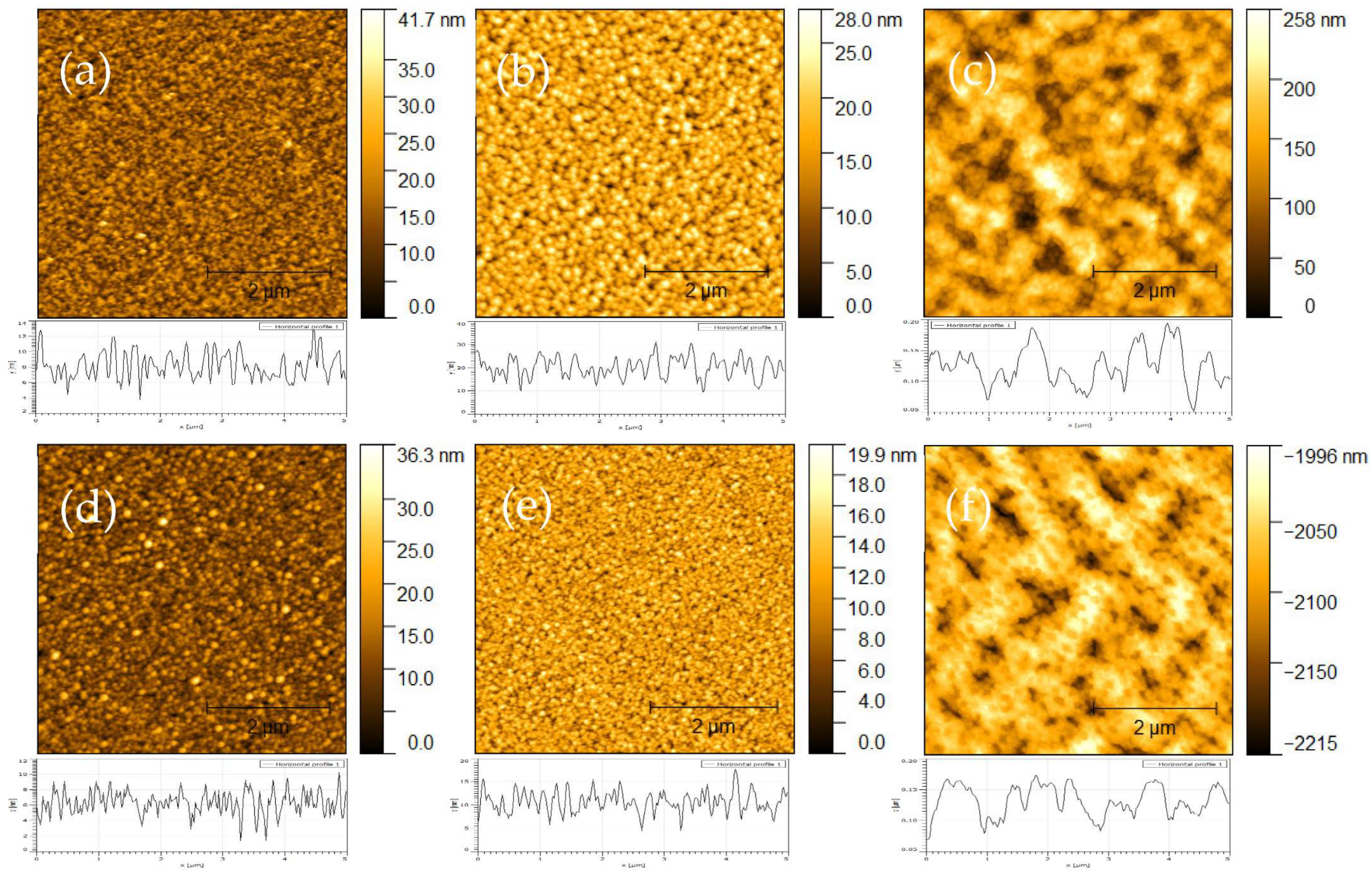
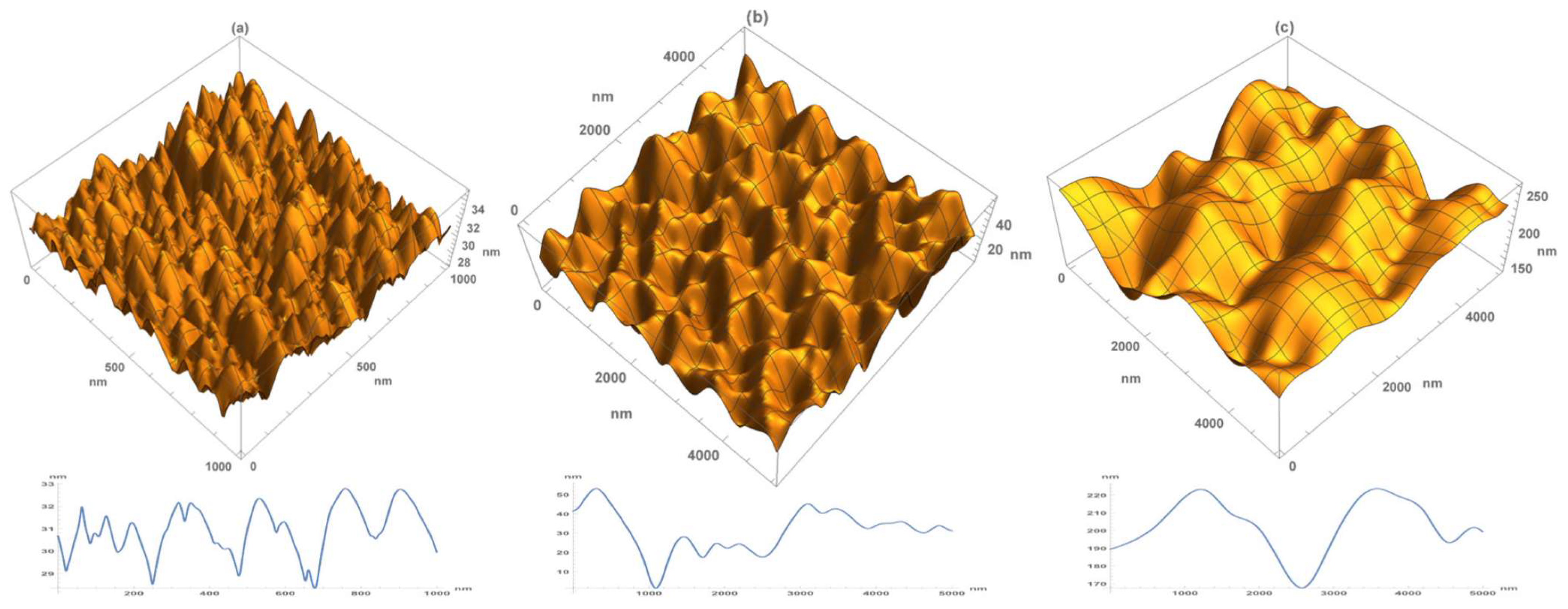
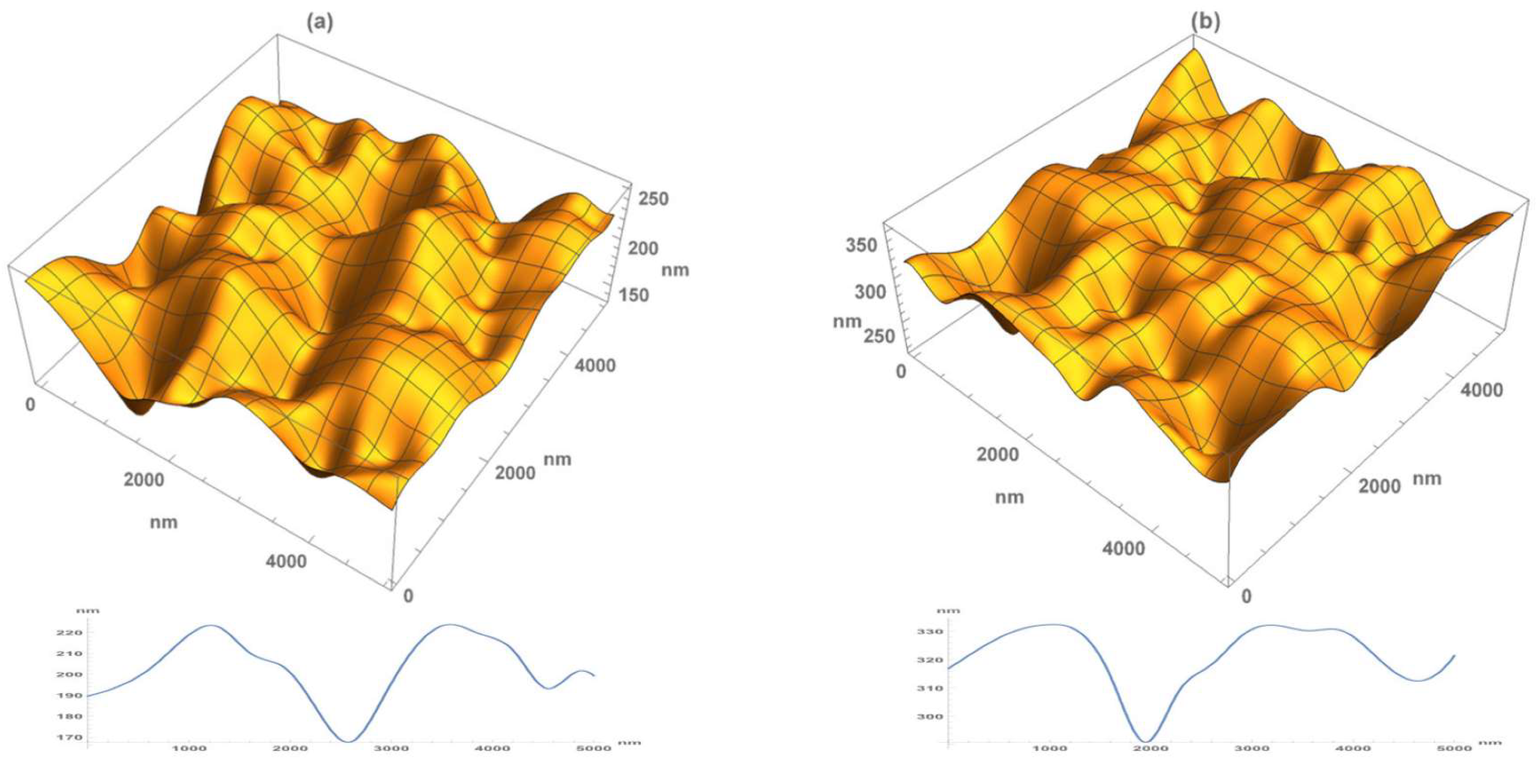
Disclaimer/Publisher’s Note: The statements, opinions and data contained in all publications are solely those of the individual author(s) and contributor(s) and not of MDPI and/or the editor(s). MDPI and/or the editor(s) disclaim responsibility for any injury to people or property resulting from any ideas, methods, instructions or products referred to in the content. |
© 2023 by the authors. Licensee MDPI, Basel, Switzerland. This article is an open access article distributed under the terms and conditions of the Creative Commons Attribution (CC BY) license (https://creativecommons.org/licenses/by/4.0/).
Share and Cite
Khuzhakulov, Z.; Kylychbekov, S.; Allamyradov, Y.; Majidov, I.; Khenner, M.; Terzic, J.; Gurgew, D.; Er, A.O. Synthesis and Characterization of a Zirconium (Zr) Thin Film on Si(100) via Pulsed Laser Deposition. Coatings 2023, 13, 1748. https://doi.org/10.3390/coatings13101748
Khuzhakulov Z, Kylychbekov S, Allamyradov Y, Majidov I, Khenner M, Terzic J, Gurgew D, Er AO. Synthesis and Characterization of a Zirconium (Zr) Thin Film on Si(100) via Pulsed Laser Deposition. Coatings. 2023; 13(10):1748. https://doi.org/10.3390/coatings13101748
Chicago/Turabian StyleKhuzhakulov, Zikrulloh, Salizhan Kylychbekov, Yaran Allamyradov, Inomjon Majidov, Mikhail Khenner, Jasminka Terzic, Danielle Gurgew, and Ali Oguz Er. 2023. "Synthesis and Characterization of a Zirconium (Zr) Thin Film on Si(100) via Pulsed Laser Deposition" Coatings 13, no. 10: 1748. https://doi.org/10.3390/coatings13101748





